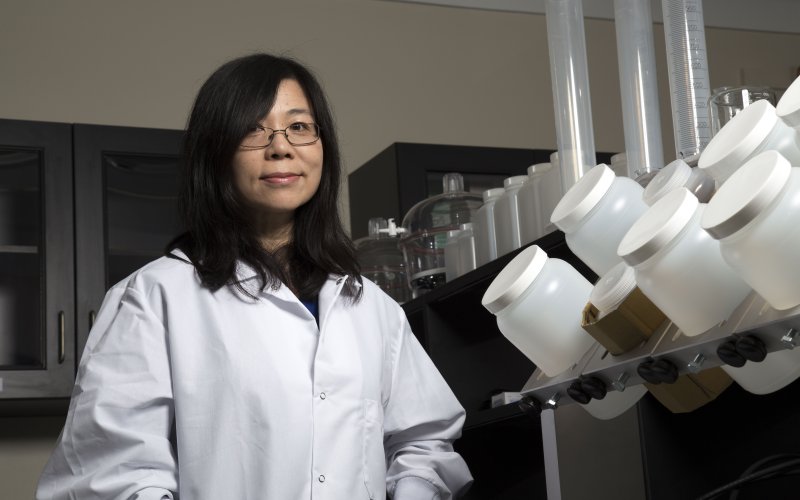UAlbany-led Team Receives $1.6M from EPA to Study PFAS in Soil

ALBANY, N.Y. (Sept. 4, 2024) — A research team led by the University at Albany’s College of Nanotechnology, Science, and Engineering has been awarded $1.6 million from the U.S. Environmental Protection Agency to more fully understand how so-called forever chemicals infiltrate soils and how to prevent that potentially harmful contamination from entering the food supply.
The project specifically focuses on per- and polyfluoroalkyl substances, more commonly known as PFAS, which have been widely used in industrial processes and consumer products for decades and have been found to contaminate biosolids, or sludge, from wastewater treatment plants that is often used as fertilizer in agriculture.
The research team is led by Professor Yanna Liang, chair of CNSE’s Department of Environmental and Sustainable Engineering, and includes colleagues from Case Western Reserve University in Ohio and the University of Florida. The grant was among $15 million in research funding announced Wednesday by the EPA to fund scientists working to reduce PFAS exposure from food and protect farmland and farming communities.
PFAS have been used by manufacturers worldwide in the production of a variety of consumer products, including nonstick cookware, some cosmetics, firefighting foams and stain resistant clothing and carpets. According to the Centers for Disease Control’s Agency for Toxic Substances and Disease Registry, PFAS can migrate into the soil, water and air. Due to their persistent and widespread use, PFAS are found virtually everywhere and in everyone at some level. Scientific studies have indicated that exposure to PFAS may be linked to harmful health effects in humans and animals.
The EPA’s goal with the project is to “collect PFAS bioaccumulation data in agricultural plants and livestock and explore strategies for reducing PFAS exposure, which are important parts of EPA’s commitment to protecting human health and the environment from PFAS.”
Liang and her team aim to thoroughly understand the fate of PFAS in complex soil-biosolids-plant systems with or without an amendment, such as activated carbon. The mechanisms revealed from studying the interactions between PFAS and a commercial material will enable the team to design better and more suitable amendments for stabilizing PFAS in contaminated soil while allowing such soil to produce marketable and PFAS-free products continuously.
Using AI to protect agriculture, food supply
Liang and her colleagues will use machine learning, a form of artificial intelligence, to model how PFAS contamination behaves in different soils based on its properties and then test the models in field trials to verify their accuracy. The field work and predictive models will enable the research team to generate strategies and guidelines to assist PFAS-affected communities in their decision making.
“My team and I deeply appreciate the timely support from EPA on this important project. PFAS, due to their nearly ubiquitous presence in the ecosystem, have negatively impacted many people all over the world, including numerous tribal and agricultural communities,” Liang said.
Liang’s project will seek to find innovative solutions to remediate PFAS in the environment while enabling the soil to continue to be used in beneficial ways, contributing significantly to sustainable agriculture in the U.S. and beyond.
“The presence of forever chemicals, such as PFAS, throughout the environment is unfortunately a given. The molecules have become integrated into plants that grow in contaminated soil and animals that live in or drink contaminated water,” said CNSE Dean Michele J. Grimm. “The work that Dr. Liang and her colleagues are pursuing will combine environmental engineering, chemistry, and machine learning — a form of AI — to design systems that can bind to PFAS molecules in the soil to safely and effectively remove them. When successful, this research will give us new tools that can ‘capture’ these chemicals and remove them from our food chain.”




